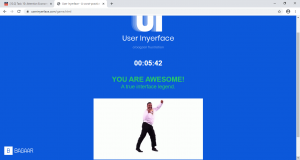With the development of technology, a new communication type was formed that would lead to future discussions. There has been a lot of debate as to whether emoji is a new form of language or an old language modernized by technology. If emoji is a new language that can communicate meaning without the use of an alphabet system, then ideas should easily translate across different cultures.
Advantages of Emoji
Alshenqeeti (2016) states that “language is not stagnant, it evolves with society and new forms and terminologies are constantly appearing, and emojis are just another aspect of this” (p.61). An interesting fact that Skiba (2016) mentions from Mosendzs’ 2014 study was that in order to communicate with millennials, the White House uses emoji. Those born after 2000 (Millenials) grew up in a technology world which uses text-based devices easily which “raises the question of whether emojis are creating a new visual language for a new technology savvy generation…” (Alshenqeeti, 2016, p.1).
There are numerous advantages to using emojis such as:
1)They are not based on any alphabet system and therefore people can communicate without learning the language first (Alshenqeeti, 2016)
2)Those who have difficulty texting by thumb on a small screen, emojis provide a faster way of replying easily without getting hand fatigue (Skiba, 2016)
3)Emojis do not rely on morphemes or any grammar and therefore emojis can be string together in multiple ways to communicate the same meaning (Gawne & McCulloch, 2019)
4)An emoji can “express emotional complexity in a short and creative way, that cannot be conveyed with verbal language” (Alshenqeeti, 2016, p.60)
5)The file size of an emoji is lightweight but still show detail and is multicolored (Gawne & McCulloch, 2019)
Ties to the Past
Alshenqeeti (2016) referenced Thurlow and Brown (2003) stating that part of the controversy around emoji as a new language was that “Emojis evolved from teen and commercial culture” (p.58). However, others ave countered this with the idea that emojis are not something new, but revised pictographs from the past. For instance, early cavemen were the first to depict life in the form of pictures (Alshenqeeti, 2016). As well, the Sumerians developed Cuneiform and the Egyptians used a hieroglyph system to record historical events (Alshenqeeti, 2016). Just like Lewis Carroll (author of Alice in Wonderland) who wrote and illustrated a rebus like letter, emojis can be inserted in between words adding creativity into the communication (Alshenqeeti, 2016). Whether emoji is a new form of language or an evolution of pictographs from the past, the “word emoji has tripled in use since it emerged in 1997” reaching millions of people (Skiba, 2016, p.56).
Emergence of Emoji and Emoticon
Emojis can be confused with emoticons and stickers. Tang and Hew (2019) defined that emoticons use keyboard symbols combined together to create a picture and originated in China, while emojis are actual pictures that originated in Japan and require a specific software. For this paper, both emojis and emoticons will be taken into consideration because of the limited data available on the subject.
While working for the Japanese company Docomo, Shigetaka Kurita developed the concept of emoji (Skiba, 2016). Emojis then began to be available in Japanese mobile phones and started gaining popularity in 1999 but the codification was not standardized at this point (Moschini, 2016). By 2010, emojis that were commonly used were adopted to a Unicode standard (Tanya and Hew, 2019). Gawne and McCulloch (2019) related that the “inclusion of emoji in Unicode enabled Apple to include emoji with their iPhone when Apple moved into the Japanese mobile market and made this part of the global release of the iPhone with iOS5 in 2011” (p.2). The combination of technology and the ease of using emojis across a wide range of audience contributed to its rise.
By November 2015, the Oxford Dictionary chose the “Face with Tears of Joy” pictograph for the word of the year (Skiba, 2016). Moschini noted from the Steinmetz (2015) study that the President of Oxford Dictionary clarified that the emoji was chosen because it was a form of communication that reflected a global culture because it was playful, emotionally expressive, and immediate (2016). It is interesting to note that Harvey Ross Ball in 1963 was the American designer who created the original ‘smiley’ face which gained popularity and evolved over time (Moschini, 2016). Moschini (2016) stated that the smiley face emoji can be seen as a marker in the fusion of Japanese kaomoji and the 1960s pin-button from American culture. This Japanese-American mash up could be the beginning of universal acceptance of a pictograph (Moschini, 2016). Tang and Hew (2019) relate from Azuma and Ebner’s 2018 study that graphicons can be a future universal symbolic language as it bypasses linguistic and cultural differences and can reach globally. However, Tanya and Hew (2019) also noted that “while emoji may be evolving to a language, emoji language is not the same across cultures” (p.2458).
Complexity of Emoji: Global Acceptance and Cultural Variations
Tang and Hew (2019) focused on peer-reviewed journals from Asia, North America, and European countries. The study found that there was a commonality worldwide where in people use emoticons, emoji, and stickers to express emotions, to avoid misunderstanding, for enjoyment and for social purposes (Tang and Hew, 2019). The study also found that people tend to use emoticons that are understandable and that senders of friendly emoticons are perceived as more likeable, but senders who use excessive emoticons are seen as insincere (Tang and Hew, 2019). However, Tang and Hey (2019) relate from Park, Barash, Fink, and Cha’s study (2013) that Asian cultures favored vertical emoticons with variations in eye shape while those from Western cultures prefer horizontal emotions with differences in mouth shape.
In addition, Alshenqeeti (2016) stated that there was global acceptance in some popular emojis from several countries. For example, the United States had ‘face with tears of joy’ as the most popular emoji followed by ‘kissing face’ emoji, and ‘heart eyes’ emoji while Columbia had ‘heart eyes emoji’ as the most popular followed by ‘face with tears of joy’ and then ‘heart’ emoji as third (Alshenqeeti, 2016). Alshenqeeti, H (2016) mentioned from Lu et al. (2015) study that ‘face with tears of joy’ was the most popular emoji for the US, Brazil, Mexico, Spain, Turkey, Indonesia, and Russia. However, the most popular emoji for Argentina and Columbia was ‘heart eyes emoji’ and the most popular one for France was ‘heart’ emoji (Alshenqeeti, 2016). Thus, even though there are universal acceptances in some emojis, slight cultural variations within countries can be seen. The Li and Yang (2018) study focused on ten volunteers using Wechat in China and found that the top emojis frequently used were the ‘thumbs up’ emoji, followed by the ‘rose’ emoji and ‘traditional Chinese way of greeting and thanks’ emoji. It is interesting to note that the ‘face with tears of joy’ emoji was not in the top three. The top three popular emojis in China were gestures that were highly functional and efficient for conversations and replies (Li and Yang, 2018).
Additionally, the most common emoji in the Unicode are gestures with the pointing index fingers going up, down, to the left and to the right (Gawne and McCulloch, 2019). The article reported that “while many Westerners may think of index-finger pointing as the most prototypical, and indeed it is common cross-culturally, it is far from a universal, as cited by Cooperrider, Slotta, & Nunez, 2018” (Gawne and McCulloch, 2019, p.12). For example, the Arrernte people from Australia uses the middle-finger to point while the Laos people use lip pointing (Gawne, and McCulloch, 2019). Furthermore, emblems are gestures that are mostly universal and can stand alone without text or speech (Gawne and McCulloch, 2019). Though there may be some cultural variation within this. For example, the ‘peace sign’ emoji in North America stands for peace, but if you rotate it with the palm facing inside, the gesture is seen as offensive in Britain, Australia, and New Zealand (Gawne and McCulloch, 2019, p.5). The study also mentioned that in Greece, Turkey, and Southern Italy, that the ‘okay sign’ emoji does not relate a positive meaning, but the opposite (Gawne and McCulloch, 2019, p.5).
Future of Emoji
The potential for emoji is still developing and we are continually learning more about this type of communication. The future uses of emoji may be able to encompass a more global and “diverse population, including those with low literacy” which in turn can remove a digital divide (Skiba, 2016, p.57). The advantage of emoji in not relying on an alphabet system is that it allows learning in a creative pictorial way and fosters collaboration since emojis are based on pictures, it cannot “be taught, rather it is acquired over time, through use and sharing” (Alshenqeeti, 2016, p58).
There have been several quantitative researches in emojis. However, language is complex and emoji is still evolving and new emojis are continually being added to the Unicode. Thus far, data in this field has been limited. Further quantitative and qualitative research is needed in order to understand the future of emojis globally and gain a deeper understanding into the slight cultural varieties. Furthermore, more research is needed into creating a standard for emojis as each vendor can render their own picture of the same emoji and this may lead to miscommunication between the sender and the recipient (Miller et al., 2018). Lastly, as more emojis are continually added to the Unicode, emoji research would “provide clear criteria for how emojis would have to be used to move towards being more language-like” (Gawne and McCulloch, 2019, p.15).
References:
Alshenqeeti, H. (2016). Are emojis creating a new or old visual language for new generations? A socio-semiotic study. Advances in Language and Literary Studies, 7(6), 56-69.
Gawne, L., & McCulloch, G. (2019). Emoji as digital gestures. language@ internet, 17(2).
Li, L., & Yang, Y. (2018). Pragmatic functions of emoji in internet-based communication—a corpus-based study. Asian-Pacific Journal of Second and Foreign Language Education, 3(1), 16.
Gawne, L., & McCulloch, G. (2019). Emoji as digital gestures. language@ internet, 17(2).
Miller Hillberg, H., Levonian, Z., Kluver, D., Terveen, L., & Hecht, B. (2018). What I See is What You Don’t Get: The Effects of (Not) Seeing Emoji Rendering Differences across Platforms. Proceedings of the ACM on Human-Computer Interaction, 2(CSCW), 1-24.
Moschini, I. (2016). The” Face with Tears of Joy” Emoji. A Socio-Semiotic and Multimodal Insight into a Japan-America Mash-Up. HERMES-Journal of Language and Communication in Business, (55), 11-25.
Skiba, D. J. (2016). Face with tears of joy is word of the year: are emoji a sign of things to come in health care?. Nursing education perspectives, 37(1), 56-57.
Tang, Y., & Hew, K. F. (2019). Emoticon, emoji, and sticker use in computer-mediated communication: A review of theories and research findings. International Journal of Communication, 13, 27.
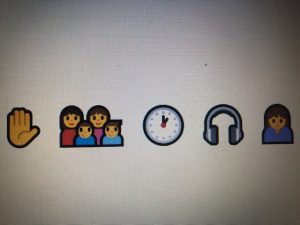 ………. sorry let me translate !!
………. sorry let me translate !!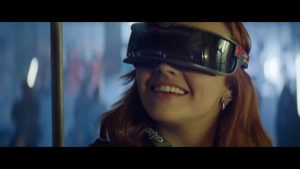 Player One Movie
Player One Movie  Player One Movie
Player One Movie Can you get me a loaf of bread from Safeway on the
Can you get me a loaf of bread from Safeway on the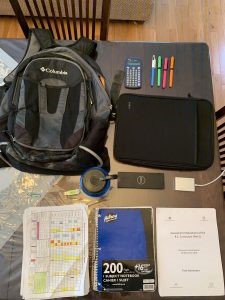
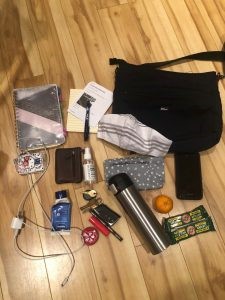
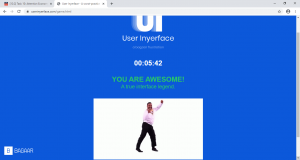
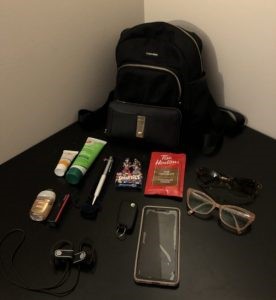
 VS
VS 


